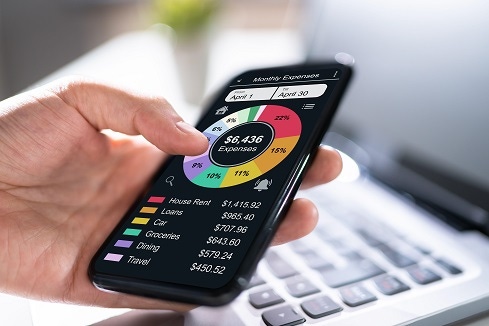The world of finance drastically changed when the pandemic finally unlocked the true value of fintech.

AI adoption in the financial industry was quite slow before the pandemic. When the world locked down, it finally pushed financial institutions and their partners around the globe to automate the rest of their banking services and make them more customer centric. What does the future hold in store for 2022? Here are seven fintech trends to keep an eye on:
1. Digital banking
Due to the changing consumer habits caused by the pandemic, bank closures are on the rise. Digital banking offers improved customer experience and delivers faster and more efficient services. Statista estimations show that 64.6% of US citizens use online banking in 2021, and this means that online banking has finally become a transformational tool in finance. The good news is that digital banking is not just about going paperless and cashless -- the underlying technologies have substantially contributed to the shift from a centralized traditional banking model to a more distributed, technology-driven one.
2. White label fintech
The next prevalent fintech trend that you should not miss out on is white labelling. In a nutshell, white label products are manufactured by a provider to be rebranded before they are sold. Finance management has a lot of complexities. White label fintech solutions allow businesses of all size to easily create a global payment gateway. It is an actual win-win since it provides the distributor with a larger customer base and minimizes initial launch costs for the reseller.
3. Data aggregation
Data aggregators will increasingly be responsible for facilitating the way data is exchanged between financial institutions and their customers. For instance, Envestnet Yodlee retrieves data from multiple sources, including investments and credit cards outside the originating financial institution. Expect fintech companies to use this transparency to provide their own customers with additional services.
4. Blockchain technology
According to a Cision PR Newswire report, the size of the global blockchain market is forecasted to increase from $3 billion in 2020 to $39.7 billion by 2025. Blockchain is undoubtedly the most significant financial innovation for digital transactions because its management is distributed, which means it cannot be controlled by a specific individual, company, government, or bank. Although companies worry about the security issues of this cutting-edge FinTech, Blockchain’s growing acceptance as a way to create a secure digital ledger cannot be ignored.
5. Robotic process automation (RPA)
Robotic process automation enables businesses to obtain better work efficiency with a relatively small investment. RPA uses software robots (bots) to free up human resources and improve the way routine, repetitive business activities are carried out. Right now this technological innovation is valued at $1.40 billion -- look for it to reach $11 billion by 2027 (Grand View Research).
6. Voice-enabled payments
When online banking started, no one could even imagine how quickly it could evolve. Expect voice to become a trusted way for individuals and businesses to conduct routine banking operations just as quickly. The convenience of talking vs. typing is going to help customers quickly get the information they need. Improvements in natural language processing, natural language understanding and natural language generation will allow customers to use voice for banking transactions in so powerful a way that will feel as if they are interacting with a human teller.
7. Big data
You will be shocked but in 2020, people created 1.7 MB of data every second. Fintech providers and their customers generate vast amounts of data that can be aggregated to provide a more comprehensive view of a customer’s financial status. Expect financial institutions to partner with data aggregators (see #3 above) so they can use big data to improve customer retention and improve services.
The Bottom Line
FinTech trends will surely never be the same after 2020. The events of last year broadened our understanding of what a digital economy is going to look like moving forward. Make sure you keep these latest fintech trends on your radar screen so you can maintain a competitive advantage by transforming the future of your business finance.
About the Author(s)
You May Also Like







